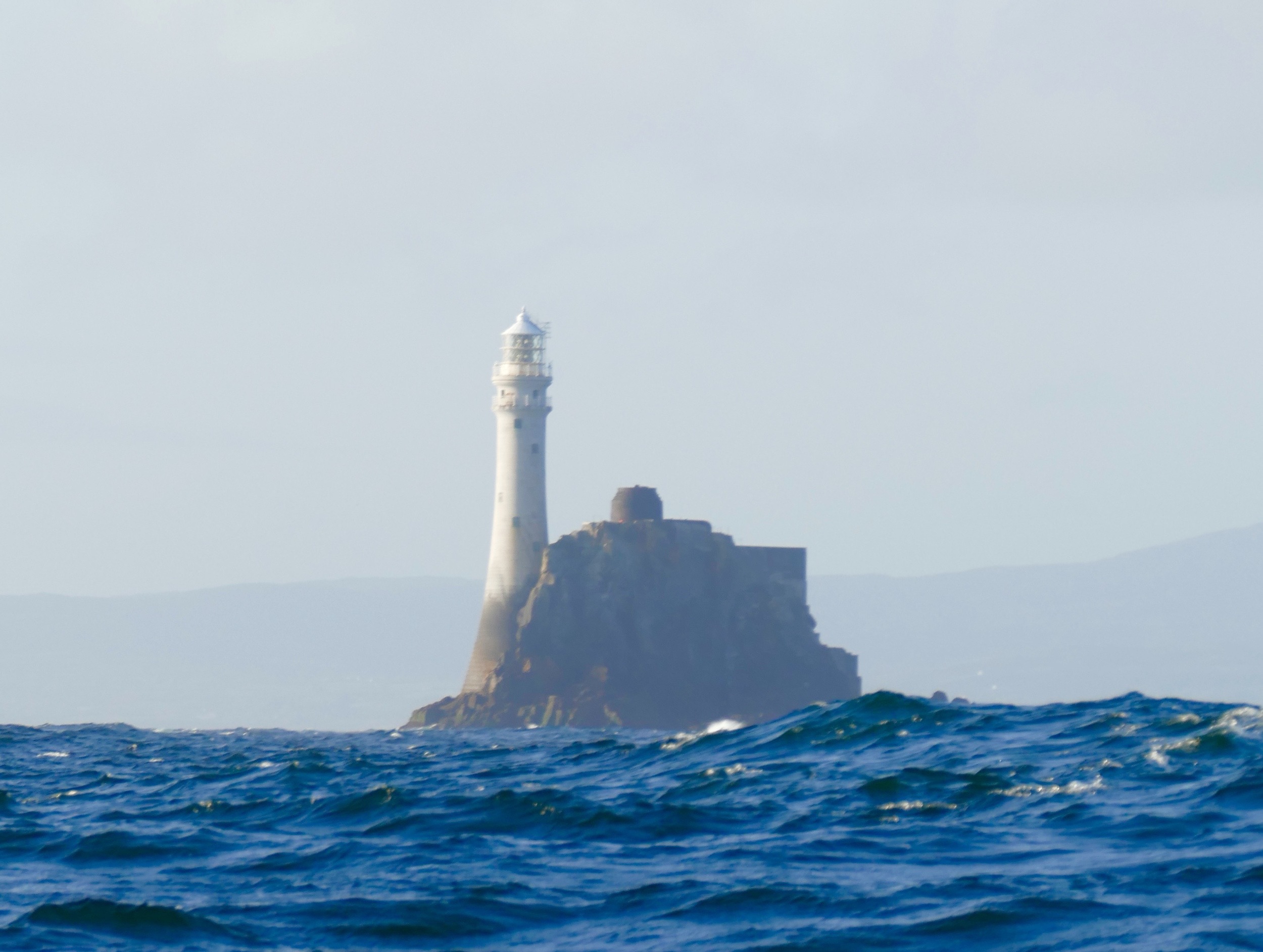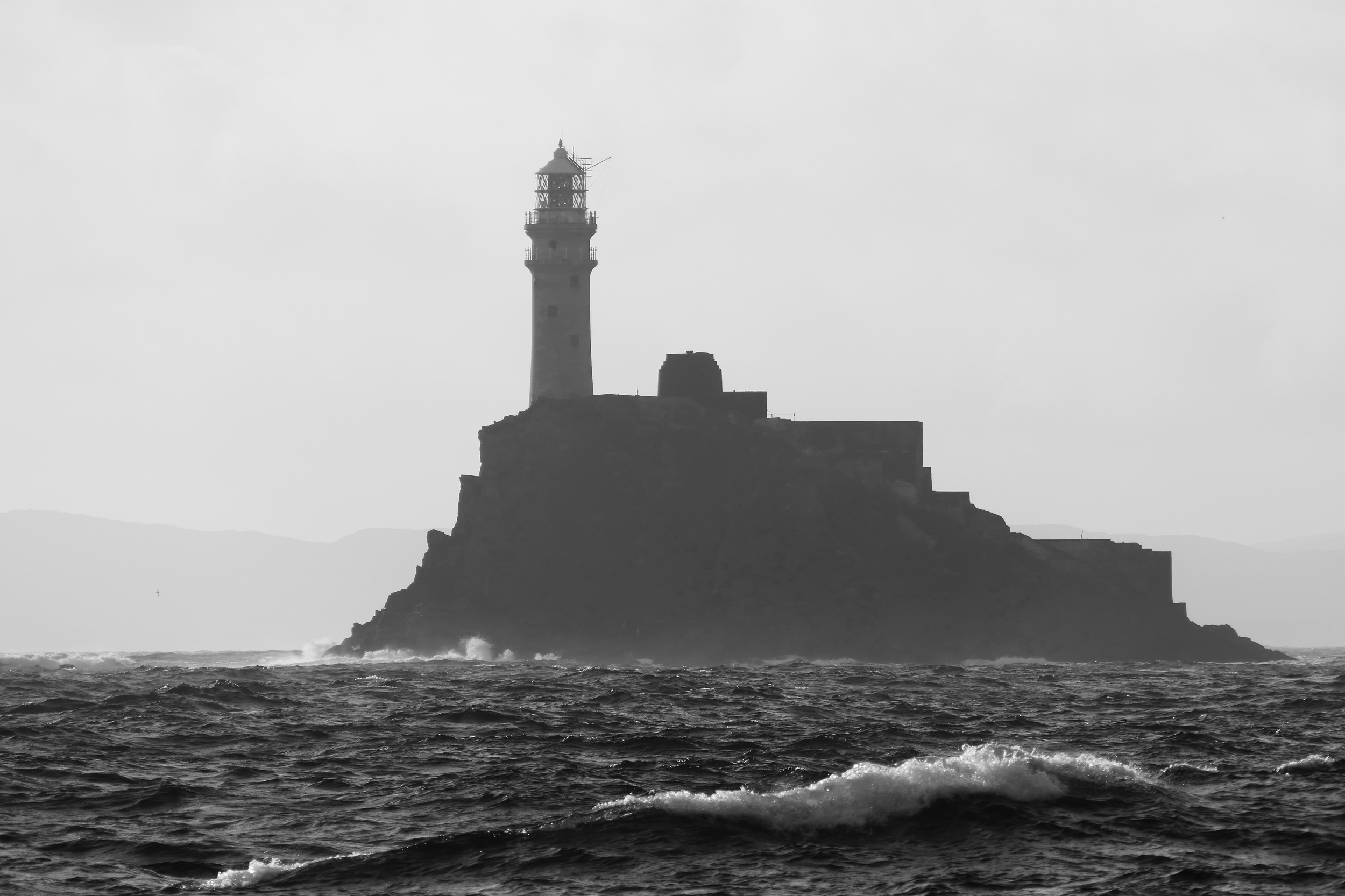When we went to raise anchor to depart Penfret, in the Glénan Islands, it was terminally stuck. On 10 metres of water, there was little to do but call a diver for help.
So we inflated our new Achilles dinghy and went ashore. Penfret Island is owned by Les Glénans, the largest sailing school in Europe, founded 1947, with 450,000 alumni. The place was packed with teenagers, but asking around, we found the boss, a young woman in a rustic building. She called the diving school in Île Saint-Nicolas, but got voicemail, so she called her friend who's friends with the diving instructors, and who told her they'd be stopping by Peregrinus after their morning class.
Sure enough, an hour later a 35-foot motorboat full of diving students came by. A young man dove with a parachute, an inflatable bag he used to lift our anchor chain which was tightly wrapped around a rock.
We tipped the young diver, because no one in the islands would take any payment. We are grateful for their generosity.
The owners of this gorgeous RM 1260 kindly offered to help with the stuck anchor by lowering a line along our anchor chain and then pulling with their engine in the opposite direction of our rode; but since we knew the divers were coming, we declined. Given the wrap the diver found, it probably would not have worked anyway. The RM 1260, 2013 European Yacht of the Year, is made of wood covered with epoxy, a radically innovative and unique technology for a new sailboat. Leica Typ 114, 24 June 2015.











